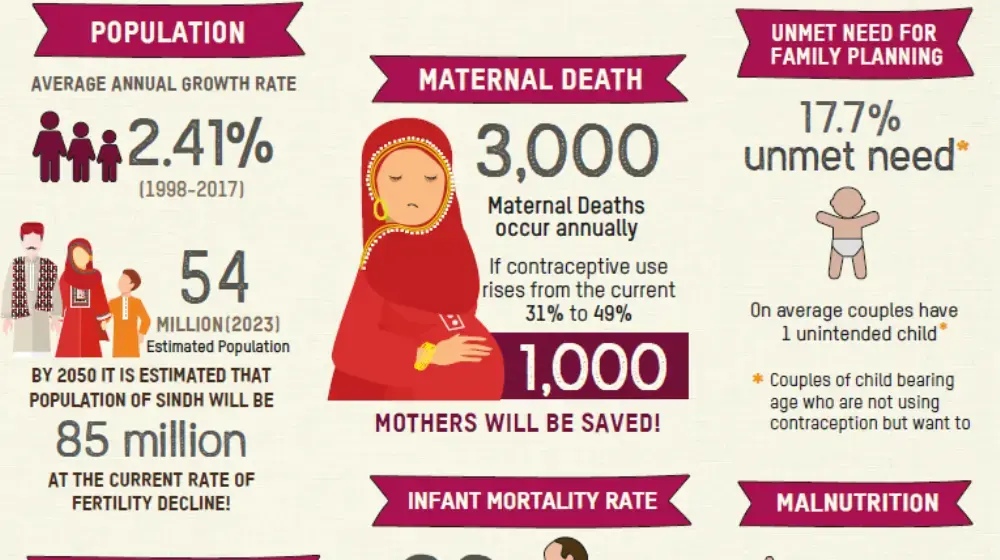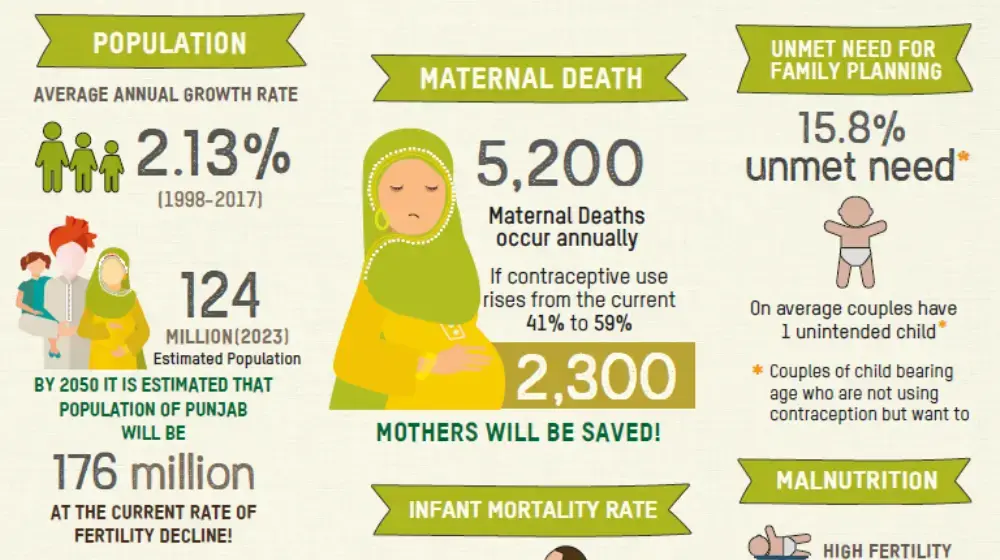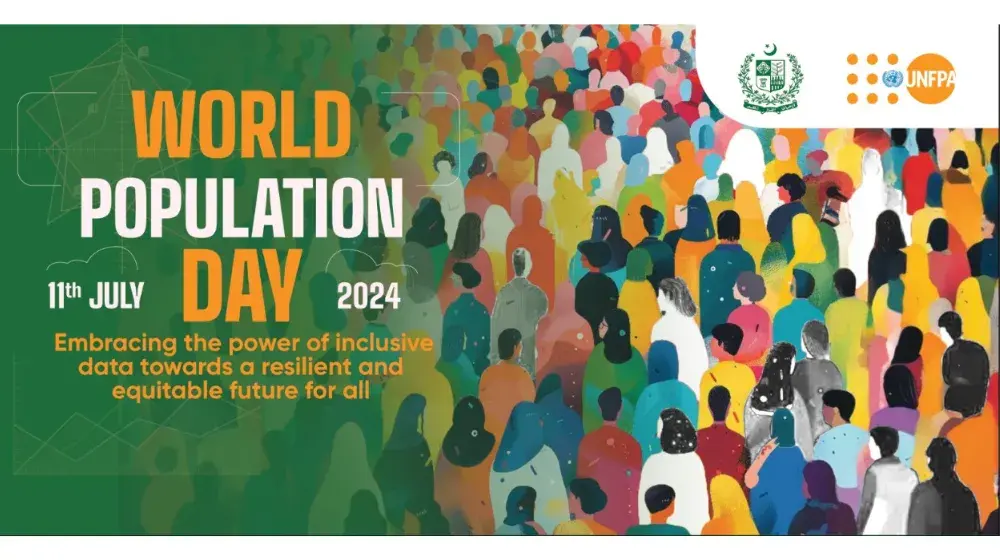Pakistan with an estimated population of 221 million (in 2020) and growing at a high growth rate (around 2 percent) is acknowledged as the fifth most populous country in the world (UNPD 2019). Since the 1970s Pakistan has persistently committed attainment of replacement level fertility as a long-term goal but lagged in achievements of the stated objectives. Pakistan recently committed at ICPD25 Nairobi Summit in November 2019 to ‘achieve universal access to sexual and reproductive health as a part of universal health coverage (UHC)’ and raising Contraceptive Prevalence Rate (CPR) to 50% by 2025, and further to 60% by 2030; and thereby lowering the total fertility rate to 2.2 children per woman by 2030. The country pledged to ensure universal access to family planning, reproductive health services, and commodities, besides ensuring access to fulfill human rights requirements.
Modern contraceptive prevalence rate (mCPR) of 25 percent (PDHS 2017-18) after more than five decades of programmatic support by public and private sectors reflects serious under-performance, manifested in inequity in contraceptive use and high fertility differentials.





